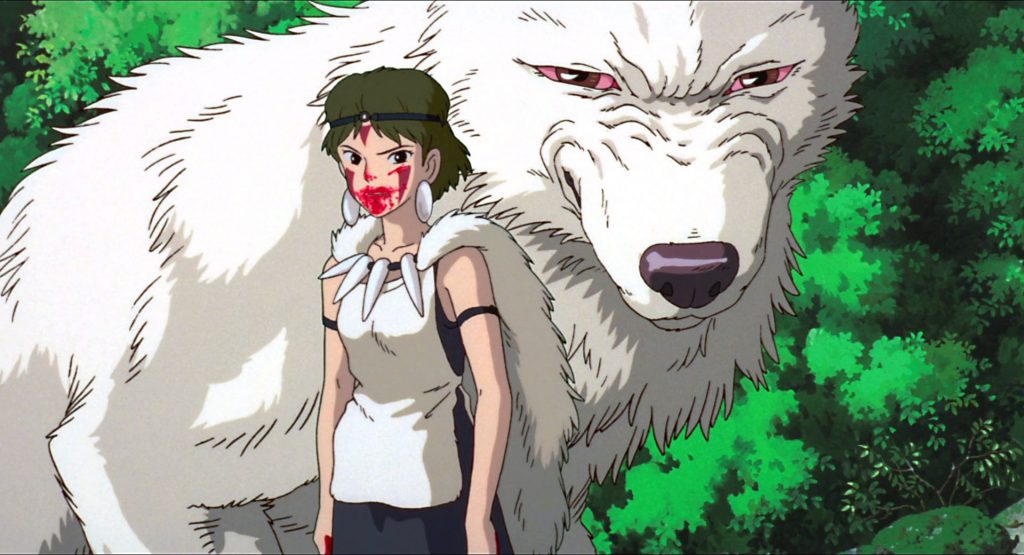We at The Spool usher in May-azaki with an in-depth look at one of Japanese animation’s most imaginative, humanist voices.
While The Spool in its current form is a pretty new publication, one of our earliest mandates was to balance out our coverage of new releases from film and television with a look back at the classics. After all, any film critic worth their salt can’t just cover whatever blockbuster or little-seen indie is coming out that week; you have to keep yourself fresh, cultivate an understanding and appreciation for the works that shaped our culture, both for good and ill.
In March, we celebrated the prolific work of the King of Quirk, Tim Burton; in April, we celebrated Black Women’s History Month with a spotlight on black women directors. For May, we delve into the realm of animation with one of the most celebrated auteurs the medium has ever conjured: Hayao Miyazaki.
Miyazaki has been a formative presence in the world of Japanese animation since 1963, when he worked for Toei Animation as an in-between artist on films like Doggie March and Gulliver’s Travels Beyond the Moon, before working on the iconic Lupin the Third series for Toei throughout the ’70s. After initial successes with 1979’s Lupin movie The Castle of Cagliostro and 1984’s Nausicaa of the Valley of the Wind, Miyazaki formed Studio Ghibli in 1985, leading to the creation of some of Japanimation’s most acclaimed works – Princess Mononoke, Spirited Away, Howl’s Moving Castle, the list goes on.
Anime often conjures up images of blood, guts, gore, and sex, the genre often associated with its ’90s reputation as an edgy Japanese import to America. This wasn’t your daddy’s animation, you thought: works like Akira, Ninja Scroll and Vampire Hunter D promised a more mature approach to animation, though they did so through more nihilistic, adolescent impulses. Anime promised high body counts and the stolen glimpse at an animated breast, perfect fodder for the teen boys who would popularize the medium in the States.

But Hayao Miyazaki’s approach was kinder, more family-friendly, though no less lush or mature – the works of Studio Ghibli, particularly the works Miyazaki directed, are incredible feats of animation that explore complex themes ranging from environmentalism to Japanese spirituality to the ongoing cycles of life and death. They’re often not black-and-white stories of good versus evil, but multifaceted tales of idealists staving off war, or environmental devastation, or the dissolution of a family.
The worlds are fantastical, with great beasts and floating castles dwarfing flawed, vulnerable human characters often more vibrant than some live-action films. While many Ghibli films carried the Disney marker throughout the ’90s and 2000s, their lush, detailed animation and decidedly Buddhist philosophies elevate them beyond their late-Disney Renaissance contemporaries into the realm of Great Art. Iconic movie critic Roger Ebert said of Miyazaki’s works, “His films are so good they force you to rethink how you approach animation.”
Throughout the month of May, the staff (and selected guest writers) of The Spool will elaborate on Hayao Miyazaki’s genius throughout each of the major films he’s directed, and even offer a few broader thoughts on his collected film work. We’ll keep this post updated as a digest of what we’re up to. Feel free to share your thoughts on Miyazaki’s work, your favorite films, etc. as well.
Read more of our Hayao Miyazaki coverage:
Years Before Studio Ghibli, “The Castle of Cagliostro” Set the Foundation for Hayao Miyazaki’s Work
“Castle in the Sky” Is Miyazaki’s Swashbuckling Steampunk Adventure
“My Neighbor Totoro” and the Age of Innocence
“Kiki’s Delivery Service” Is a Delightful Slice of Adolescent Magical Realism
Pigs Fly in Miyazaki’s Swashbuckling Sea Adventure “Porco Rosso”
“Princess Mononoke” & the Beauty of Unpleasant Matters
“Howl’s Moving Castle” Is Miyazaki’s Personal Favorite, And It’s Easy to See Why